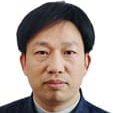Techniques and Applications of UAV-Based Photogrammetric 3D Mapping II
A special issue of Remote Sensing (ISSN 2072-4292). This special issue belongs to the section "Remote Sensing Image Processing".
Deadline for manuscript submissions: closed (15 February 2023) | Viewed by 13279
Special Issue Editors
2. Department of Land Surveying and Geo-Informatics, The Hong Kong Polytechnic University, Hong Kong 999077, China
Interests: image retrieval; image matching; structure from motion; multi-view stereo; deep learning
Special Issues, Collections and Topics in MDPI journals
Interests: SLAM and real-time photogrammetry; multi-source data fusion; 3D reconstruction; building extraction and intelligent 3D mapping
Special Issues, Collections and Topics in MDPI journals
Interests: image registering; image classification; change detection; 3D reconstruction
Special Issues, Collections and Topics in MDPI journals
Special Issue Information
Dear Colleagues,
3D mapping plays a critical role in a variety of photogrammetric applications. In the last decade, unmanned aerial vehicle (UAV) images have become one of the most important sources of remote sensing data due to the high flexibility of UAV platforms and the extensive usage of low-cost cameras. Additionally, the rapid development of recent techniques such as SfM (structure from motion) for offline image orientation, SLAM (simultaneous localization and mapping) for online UAV navigation, and the deep learning (DL) embedded 3D reconstruction pipeline has moved UAV-based 3D mapping towards the direction of automation and intelligence. Recent years have witnessed the explosive development of UAV-based photogrammetric 3D mapping techniques and their wide applications from traditional surveying and mapping to other related fields (e.g., automatic driving, structure inspection).
The aim of this Special Issue is to focus on the techniques for UAV-based 3D mapping, especially for trajectory planning for UAV data acquisition in complex environments; recent algorithms for the feature matching of aerial and ground images; SfM and SLAM for efficient image orientation; the usage of DL techniques in the 3D mapping pipeline; and the applications of UAV-based 3D mapping, such as crack detection in civil structures, automatic inspection of transmission lines, the precision management of crops, archaeological and cultural heritage, and so on.
This is the Second Edition of the Special Issue, and experts and scholars in related fields are welcome to submit their original works to this Special Issue.
Dr. San Jiang
Dr. Xiongwu Xiao
Dr. Wanshou Jiang
Guest Editors
Manuscript Submission Information
Manuscripts should be submitted online at www.mdpi.com by registering and logging in to this website. Once you are registered, click here to go to the submission form. Manuscripts can be submitted until the deadline. All submissions that pass pre-check are peer-reviewed. Accepted papers will be published continuously in the journal (as soon as accepted) and will be listed together on the special issue website. Research articles, review articles as well as short communications are invited. For planned papers, a title and short abstract (about 100 words) can be sent to the Editorial Office for announcement on this website.
Submitted manuscripts should not have been published previously, nor be under consideration for publication elsewhere (except conference proceedings papers). All manuscripts are thoroughly refereed through a single-blind peer-review process. A guide for authors and other relevant information for submission of manuscripts is available on the Instructions for Authors page. Remote Sensing is an international peer-reviewed open access semimonthly journal published by MDPI.
Please visit the Instructions for Authors page before submitting a manuscript. The Article Processing Charge (APC) for publication in this open access journal is 2700 CHF (Swiss Francs). Submitted papers should be well formatted and use good English. Authors may use MDPI's English editing service prior to publication or during author revisions.
Keywords
- UAV
- trajectory planning
- photogrammetry
- aerial triangulation
- dense image matching
- 3D mapping
- structure from motion
- simultaneous localization and mapping
- deep learning







